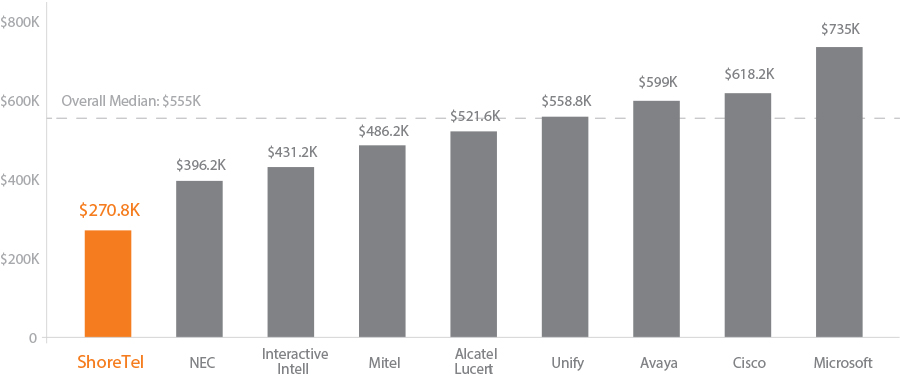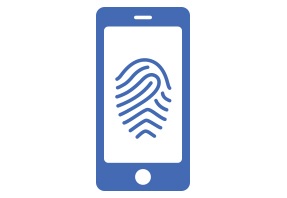5 Reasons Your Phone System May Be Outdated
Can your phone system fully support your business?
Let Omaha Communications design a phone system that will empower your work force.
Ask Yourself:
- Is your phone system cost effective?
- Does your phone system provide mobility?
- Does your phone system increase employee productivity?
- Will your phone system scale?
- Does your phone system support future and emerging technologies?
1. VALUE
Is your phone system cost effective?
Beware of hidden factors that drive up overall phone system costs.
Cost is not just about the price. Your long-term, total cost of ownership (TCO) is the best way to determine overall cost-effectiveness.
Capital Costs
The upfront sticker price
Implementation Costs
Including consulting, networking, and customization fees
Operational Costs
Including staffing, on-going maintenance and training
A surprising 46% of companies are not measuring TCO for Unified Communications according to a recent study by InformationWeek.
TCO Matters.
Some phone systems are overly complex and require lots of staff and maintenance to operate. This costs more over time. You’ll find value with a business phone provider that offers robust services and delivers them in a streamlined, easy-to-manage way.
FIVE-YEAR TCO: 200 ENDPOINTS

2. MOBILITY
Does your phone system provide mobility?
Today’s workforce is more mobile than ever. Workers are expected to get work done on the go, wherever they may be.
The days of employees waiting for a call on their desk phone are long gone.
75%
of the U.S. workforce is mobile, and that number is growing.
The average mobile worker carries
3.5 devices
But with this growth comes a growing problem.
Many people use their own cell phone on the job. They give their personal number to customers making their companies appear unprofessional. Tracking and reimbursing call costs is a pain, and using productivity apps like Salesforce is nearly impossible.
It’s no longer about bringing employees to the office.
It’s about bringing the office to the employees.
Make sure you have a business phone system that can transform a mobile device into a mobile workstation.
LOOK FOR THESE FEATURES

Let employees BYOD – bring your own device – and integrate them with your phone network

Video, IM and desktop sharing that facilitate greater collaboration from anywhere

Automatically hand over cellular calls to Wi-Fi – stay connected everywhere

Security features that keep voice and signaling safe even in public hot spots

“Dual Persona” separates work calls from personal and shows your company number on Caller ID

Hot transfer a desk phone call to your mobile device when you need to keep a conversation going out the door
3. PRODUCTIVITY
Does your phone system increase employee productivity?
A connected workforce is a productiveworkforce. A disconnected workforce is not.
According to a study by Chadwick Martin Bailey, communications can dramatically boost productivity:

By reaching co-workers on the first try, 49% of businesses reported saving 20 minutes per employee per day

Escalating an IM chat to a phone conversation saved 54% of businesses another 20 minutes per employee per day.

Digital corporate directory access, click-to-dial and presence gave 33% of business an 11 to 20 minute savings per employee per day.
Make sure your phone system is boosting productivity not draining it.
The more challenging it is for employees to connect, the more time lost during the workday.
LOOK FOR THESE FEATURES

‘Find Me’ Features
Follow employees so they can get the call the first time, regardless of the device they are using

Collaboration Tools
Video, messaging and desktop sharing make it easier to exchange ideas and get work done

Presence Features
Employees can see when other co-workers are available, in a meeting, on a call, or out of the office

Application Integration
Boost the power of your CRM by seamlessly integrating calling features, call histories and customer data
4. SCALABILITY
Will your phone system scale?
Growing too quickly can hurt your business if your communications systems can’t keep up.
Phone system scalability isn’t just a problem for fast-growing companies.
Many businesses experience cyclical changes or seasonal spikes in business. Can your phone system ramp up to support a holiday season spike in call volume?
26% of companies across all industries plan to hire seasonal workers in the 4th Quarter6
43% of retailers plan to hire seasonal workers over the holidays
40% of companies add customer service employees seasonally
Scale to maximize growth.
Nearly every organization can benefit from the ability to quickly align its phone system to meet business needs.
LOOK FOR THESE FEATURES

Plug-and-play phones that are easy to install without requiring costly forklift upgrades.

Reduces complexity that can hinder the ability to scale and add significant costs.
Easily scales to support both the office and your mobile workforce.

Intuitive for new users to quickly get started and be productive.
5. ADAPTABILITY
Does your phone system support future and emerging technologies?
A parade of smart devices over the past decade has radically changed how we do business.
From the Apple Watch and wearable technologies to the latest mobile device apps, companies need to adapt to an ever-changing landscape.



Statistics show anywhere from 74% to 90% of companies support employees’ personal devices7. Gartner even predicts half of all employees will be required to bring their own devices by 2017. Given the acceleration of product development cycles, it’s not a matter of simply adapting to new technology developments, but being prepared for the next technology changes.
Plan for the Future.
Make sure your business phone system is flexible enough to stay modern.

Open APIs
Open source software that allows easy customization and integration with 3rd party software–to take advantage of cloud-based ERP and business process applications

Easy and Intuitive
Users are faster to adopt communications tools that are simple and forgiving–and that look and feel and work as easily as the consumer apps they’ve come to love
